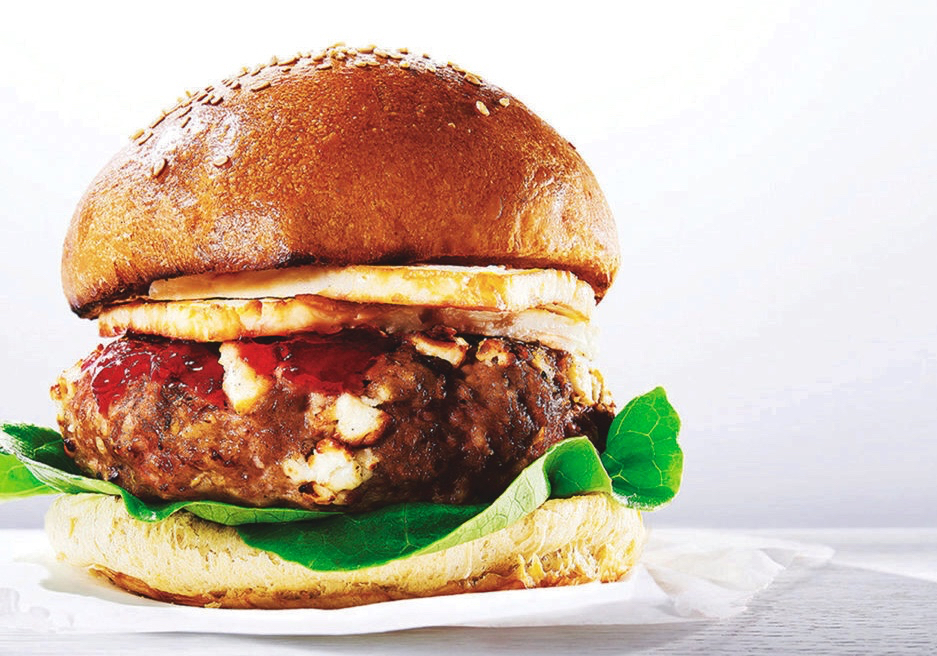There are plenty of reasons to want to take steps to become healthier.
Maybe we want to save more money, get fit or wear a smaller clothing size. Improving our health and having more wealth are great motivators, but unfortunately, such resolve often falls by the wayside.
This year, I decided to get more exercise. I went on a lot of walks and worked outside in our yard this summer. However, as winter is coming closer, I know there will come a point when I am likely to hibernate in my den until spring.
Read Also

Your best (and easiest) holiday dainty tray
Make-ahead recipes, store-bought goodies and co-operation with friends and family: Here’s how to throw together a stunning, low-stress tray.
Like many people, during winter I leave for work in the dark and I arrive home in the dark. After a long day at my desk, I’d much rather cuddle up with a blanket, a cup of tea and a TV show or magazine than seek out physical activity.
I’m in an academic department with exercise science as a major, so I know better.
I can think of lots of excuses to avoid physical activity, even though I am well versed in the benefits. During the worst of the winter, footing can be icy, so staying inside where it’s warm and safe is a compelling reason.
Sometimes last winter my husband and I went to the mall to walk, but weaving around people during the holidays was difficult. We also went to an indoor ice rink where we can walk around the perimeter free of charge, but it’s really chilly at an ice rink.
We have a ski machine and a treadmill in the basement. That’s a long way from the couch, though. (Truly, we don’t have a good reason.)
Plan more physical activity as part of your life no matter the season.
Regular physical activity reduces our risk for many chronic diseases, including heart disease and diabetes, and it helps us maintain our weight. To lose weight with physical activity, most health experts recommend 300 minutes of physical activity per week.
Do you set regular goals for yourself in any aspect of your life? Setting “SMART” goals has been a strategy used by health-promoting entities for several years. “SMART” is an acronym for specific, measurable, attainable, realistic and timed.
Let’s try out the goal-setting process. Be sure to discuss lifestyle changes with your health-care provider. Write your goal on a piece of paper and attach it to your bathroom mirror or refrigerator as a reminder.
Set a specific goal for yourself. “I’m going to get fit” is not specific enough. Here’s a specific goal: “I am going to walk on my treadmill during the news Monday to Friday.”
“I’m going to eat more healthfully” is not specific enough as a nutrition goal. Most people fall short of the recommendation for fruits and vegetables, so a nutrition goal could be: “I will eat vegetables and fruits at most meals and snacks.”
Eating 4-1/2 to five cups of fruits and vegetables is the average recommendation for adults; however, don’t go from zero to five servings in one day or you could experience a little gastrointestinal distress.
Be sure your goal is measurable. If you decide to walk on a treadmill, then set a time goal. Walking at a moderate pace for 150 minutes per week is a goal for better health. Walking for 300 minutes per week is recommended for weight loss.
You also can measure the number of steps you take with an inexpensive pedometer, or step counter. Track your steps a couple of days and then write down the readings on your calendar to track your progress. Set weekly goals; every 2,000 steps is about a mile.
Make sure your goal is attainable. If you do not have a treadmill or the budget to buy one, then you will need to figure out another approach for fitness. Maybe a local mall is a good place to walk. Perhaps a school gym is open in your location for community members to use.
On the nutrition side, think about ways to make the goal of eating more fruits and vegetables easy to reach. Remember that canned, fresh and frozen fruits and vegetables all count toward the recommendation. Can you have fruit for a mid-morning snack and fruit as a dessert for dinner? How about a cup of veggies for lunch and dinner? Can you keep some carrot sticks and broccoli cleaned and ready to eat?
Is your goal realistic? “I’m going to run a marathon” may be a realistic goal for some people but not everyone. For example, getting into a habit of walking 15 minutes twice a day can have multiple positive effects on your health. Make small, positive changes in your diet, too, because then they are more likely to last.
What is your timeline for your goal? Maybe you will decide to be part of a community walk or run in the spring. All this winter pre-training will tone your muscles and strengthen your heart so you are ready. Maybe you want to be ready to go biking with your kids or grandkids.
On the nutrition side, perhaps you and your health-care provider would be happy to see improvements in your blood cholesterol or blood pressure at your next checkup. Improving fitness and nutrition can help promote those changes.
If eating more fruits and vegetables is a goal for you, here’s a colourful recipe that will help you eat more of each.
Creamy Broccoli and Apple Salad
- 6 c. broccoli florets3/4 c. dried cranberries
- 1/2 c. sunflower seeds
- 3 medium green apples (rinsed and sliced)
- 1/2 c. chopped red onions
- 1-1/2 c. low-fat plain yogurt
- 2 tbsp. Dijon mustard
- 1/3 c. honey
Combine broccoli, dried cranberries, sunflower seeds, sliced apples and chopped onion in a large serving bowl. In another mixing bowl, blend yogurt, mustard and honey. Add dressing to the salad mixture and mix. Chill in the refrigerator for at least one hour before serving.
Makes 18 servings. Each serving has 100 calories, 2.5 grams (g) fat, 3 g protein, 17 g carbohydrate, 2 g fibre and 65 milligrams sodium.
















